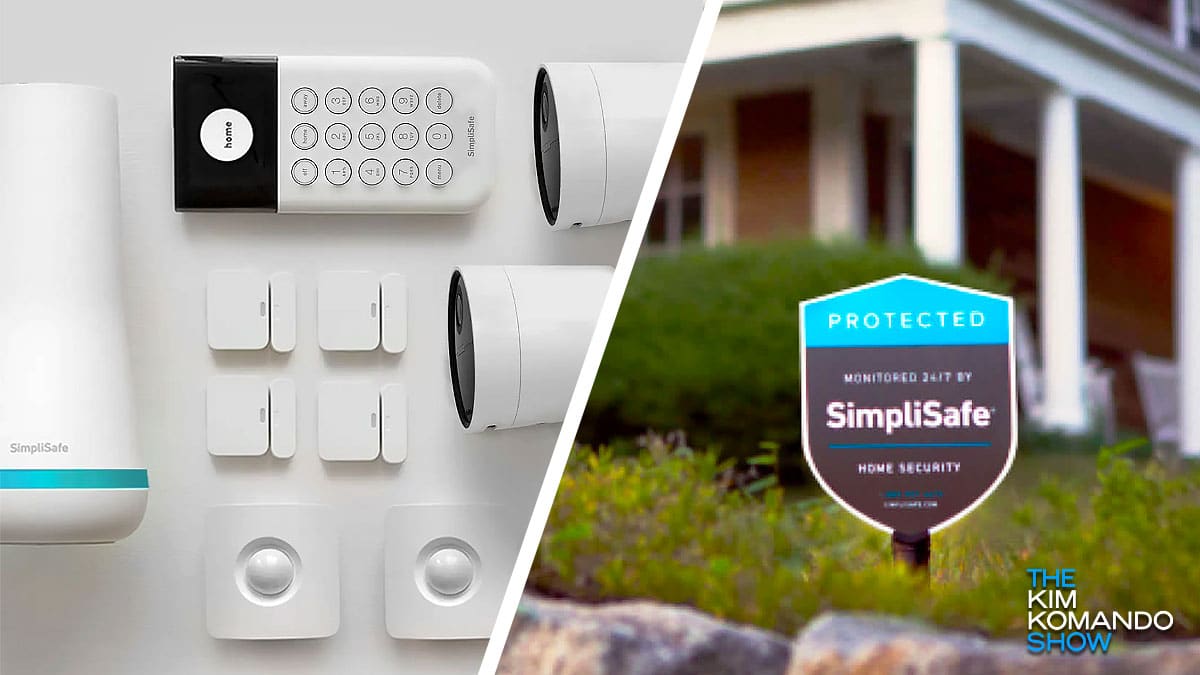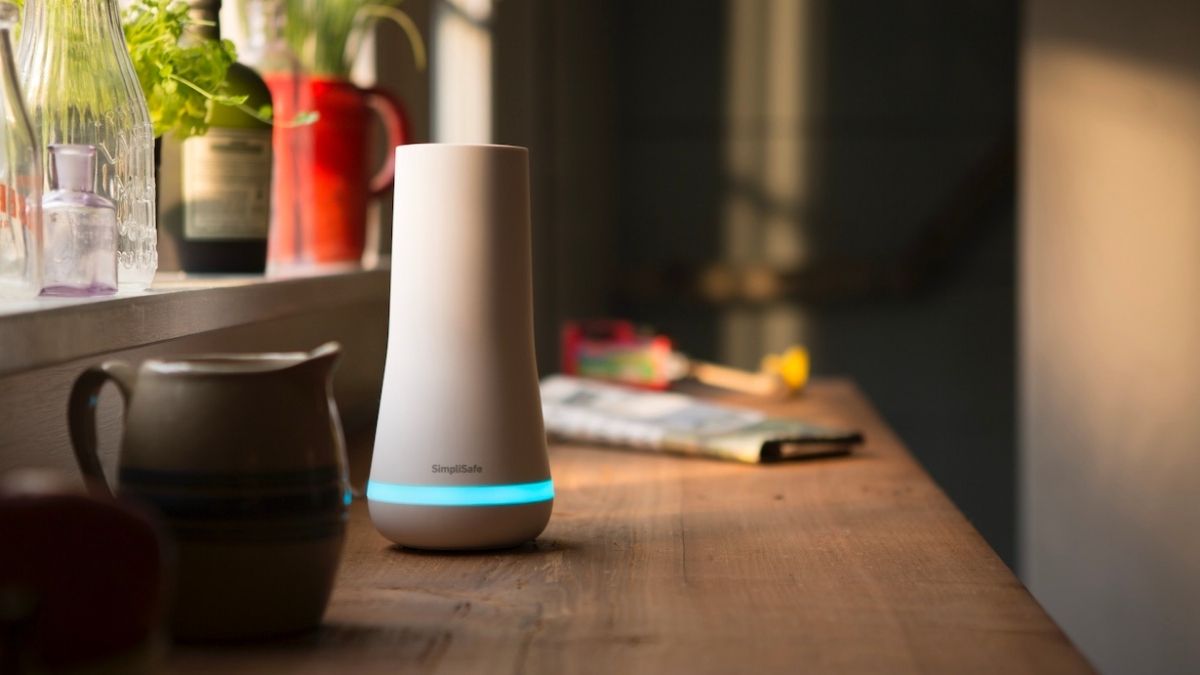Amazon receives about 13 million orders every single day. Just a few days later, those packages arrive on the customer’s doorstep. So how is this shipping process so efficient? It turns out Amazon has an incredibly complex system that may be even more convoluted than you think.
Home security tip: How to monitor gun safes, medicine cabinets, workshops and more

Smart home products aren’t new to the market, but they are becoming more affordable to make your daily life safer and easier.
If you’re new to the smart home game, start with a must for keeping your home protected 24/7. Our sponsor, SimpliSafe. Those old-school security companies that send a pushy salesperson to your door with a three-year contract and installers are so 20 years ago.
It’s easy to choose your system online and set it up yourself in under an hour. But what should you make sure to add to your cart? We’ll show you five sensors you need to protect your home from intruders, fires, water damage and more.
Once you’re ready to start shopping, head to SimpliSafeKim.com to get a free HD security camera, free shipping and a 60-day money-back guarantee.
1. Entry sensor on a medicine cabinet
Entry sensors are a no-brainer on doors and windows, but what about other places you don’t want anyone else accessing?
Kim once had an incident where someone working in her home took medication from her mother’s medicine cabinet without her knowledge. That’s why she added a SimpliSafe sensor, so she never has to worry about someone snooping and stealing again.
You or someone you live with is likely to be prescribed a controlled medication at some point. Simply placing a sensor on the door to your medication cabinet will allow you to get alerts sent to your phone whenever the cabinet is opened.
2. Water sensor
What’s the worst feeling in the world? Getting a call that your home flooded, or even worse, returning after hours of water pouring into your home.
What if day or night, home or away, you could be alerted immediately if water started accumulating where it shouldn’t? With a water sensor, you can do just that. The sensor will send off an alert whenever it comes into contact with water, allowing you to respond quickly and avoid extensive, costly damage.
3. Entry sensors on safes and weapon cabinets
40% off sale! The home security system you can set up yourself in 30 minutes
Think of the words “home security” and what comes to mind? An installation crew, pushy salespeople, an expensive monthly bill and, of course, shelling out a ton of money to get the whole thing set up.
Good news: It doesn’t have to be that way. With our sponsor, SimpliSafe, you can protect your entire home, around the clock, without busting your budget or even pulling out a drill. Install it all yourself in minutes, then it just works. And the best part is, right now, Kim’s listeners can get a SimpliSafe system for a whopping 40%. This deal won’t last long. Tap or click here to shop!
How Amazon’s complicated shipping system really works
Get 40% off home security tech, like video doorbells, outdoor cameras and window sensors

Now is the best time to protect your home with tech. Thanks to a home security sale from our sponsor SimpliSafe, you can get steep discounts on everything you need to stay secure. Grab motion sensors, security cameras, burglary alarms and more.
Scientists explain exactly what a T-Rex would taste like
Dinosaurs have been extinct for millions of years. Recent scientific advancements suggest we’re getting close to bringing some of them back. So that begs the question, what would they taste like? Well, the answer might not be what you think.
Why fire smoke constantly follows you
If you’ve ever gathered around a campfire, you might have noticed the smoke seems to follow you no matter where you are. No, it’s not your bad luck — there’s actually a scientific reason behind it.
How do oysters make pearls?
Pearls are iridescent spheres made of the same materials as an oyster’s shell. So, why are they so much more beautiful than the shell itself? It all comes down to the life cycle of an oyster.
How humans solved the greatest riddle of navigation
When you look at a globe, you see horizontal and vertical lines crisscrossing the entire sphere. Those are latitude and longitude lines and they have helped us explore the Earth over the last 500 years. In this video, you’ll learn how to find your own latitude and longitude at home without using Google. Cool!
Why is the Vatican's giant telescope located in Arizona?
Here’s a fun fact for your next holiday get together: The Catholic church is a leading force in space exploration. How? The church funds a massive space telescope in the middle of the Arizona desert. Researchers have used it to make countless discoveries and better understand the universe. But why is it in Arizona?
Historic weapons that were complete failures
War has been a constant throughout human history. In some cases, war led to ingenious innovation — and other times, it led to abject failure. In this video, go back in time to see weapons once lauded as the next game-changers. In reality, they were never used in combat or failed once deployed.
Why the US Army's camouflage was a big mistake
Camouflage has been part of military strategy for millennia. It allows soldiers to hide in plain sight and attack without being seen. But a little over 20 years ago, the U.S. changed its military camouflage and everyone realized pretty quickly that it was a big mistake.
Spider eyes are more powerful than you think
Spiders are some of the smallest invertebrates on Earth, but these tiny creatures have a remarkable skill. They can see better than most animals 10 times their size. The trick is that their eyes are tiny little telescopes that allow them to focus on things in extraordinary detail. Some scientists even claim spiders can see the details of the moon. The real question is, why do they need to be able to do this?
What causes sleepwalking?
Most of us know someone or are someone who occasionally gets up in the middle of the night while they are sleeping and walks around the house or does something strange. This is called sleepwalking, and around 4% of US adults have reported this happening to them. But why does this happen, and what can we do to prevent it?
Can you build a skyscraper out of wood?
The modern skyscraper is one of the most extraordinary feats of human engineering. These cloud piercers have been built with steel since the beginning of the 20th century, but now some creative builders are starting to think outside the box. What if you made one completely out of wood? Is it possible? The answer is yes, and they are already being built.
Why cruise ships virtually never sink
During the heyday of sea travel, it was fairly common for ships to be lost at sea. Ships were vulnerable to the elements, and there are certainly a lot of dangers on the open water: A freak wave, a massive storm or even an iceberg. Now we have enormous cruise ships and it’s extremely rare to hear of one sinking. What makes these floating cities so unsinkable?
What does the world's largest machine do?
When you think of large machines, you probably picture a massive tractor or maybe an enormous science experiment. Think bigger — much, much bigger. How about the size of the entire United States? The world’s largest machine is actually the U.S. power grid and how it became one giant machine is an amazing story.
What is the smallest thing in the universe?
The universe is massive, filled with hundreds of millions of galaxies and stars 100 times larger than the sun. But what if we looked down instead of looking up? There are entire worlds all around us that we can’t see. The smaller we get, the crazier these worlds are. How small can we get, and what does the world look like from that perspective?
What exactly is terminal velocity?
We have all heard the old tale that if you throw a penny off the Empire State Building, it will drop so fast that it could kill someone on the street below. Is that true? Some people put it to the test. Check out what happens when pennies are dropped onto someone from a helicopter way up high.
The shocking complexity of concert tours
Who doesn’t love a good concert? The blaring music, the beautiful lights and the singing crowd. But the process of getting the band set up, the stage ready and the venue prepared is incredibly complicated. Dozens of man hours go into getting a show ready. If a band is big enough, they have a well-oiled machine to get it done.
The surprising way microchips are made
Almost every tech gadget we use in our daily lives has some sort of microchip inside it. TVs, thermostats and even toasters rely on microchips to work efficiently. Microchips are made using sand, but how do we go from a pile of grains to a tiny little computer? The answer? With a ton of work.
